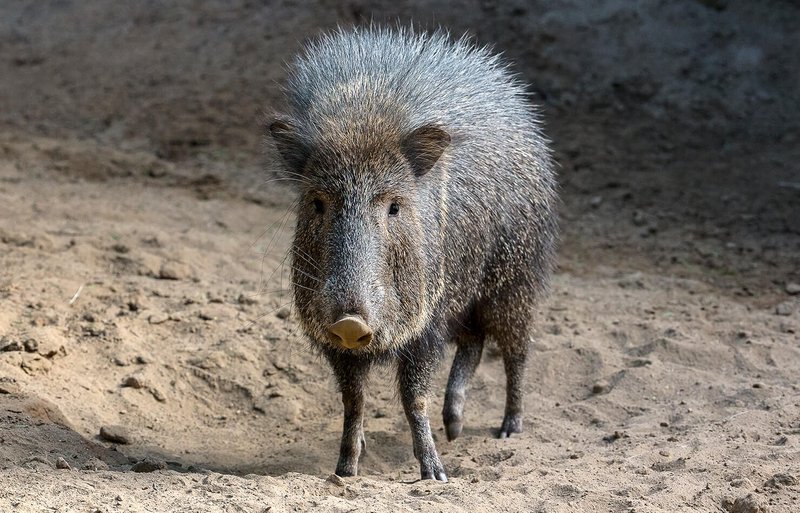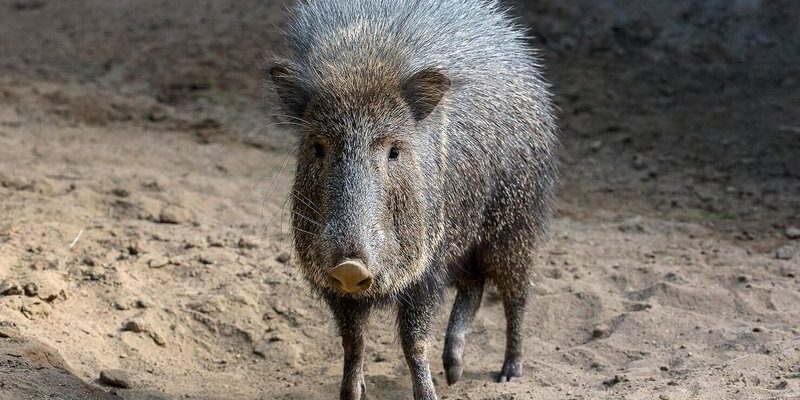
Peccaries are fascinating animals with unique social behaviors. They play a crucial role in their ecosystems, helping to maintain plant diversity by eating fruits and seeds. However, their interactions with humans can sometimes lead to conflict. Understanding the dynamics of these encounters is key to gauging how dangerous peccaries can be.
What Exactly Is a Peccary?
Peccaries are medium-sized mammals belonging to the family Tayassuidae. They’re often mistaken for true pigs, but they actually belong to a different family. There are three main species: the collared peccary, the white-lipped peccary, and the Chacoan peccary. Collared peccaries are the most widely known and can be found from the southern United States all the way down to South America.
These animals typically weigh between 50 to 150 pounds and have a stocky build, with short legs and a sturdy body. Their dark fur and distinctive markings, especially the collar of lighter fur around their necks, make them easily recognizable. They are generally social creatures, often found in groups of about 10 to 30, and they communicate through a variety of vocalizations, from grunts to squeals.
Understanding the Peccary’s Behavior
Now, you might be wondering how a creature like the peccary behaves in the wild. Peccaries are primarily herbivores, munching on fruits, roots, and tubers. They also have a unique social structure where they form strong bonds within their groups. This social dynamic is fascinating; it’s almost like a little neighborhood where everyone looks out for one another.
However, it’s essential to understand that peccaries have a fierce side. When threatened, these animals can become aggressive, especially if they feel their young are in danger. They have sharp tusks that can inflict serious injuries. So, while they may appear cute and harmless, they can indeed be *dangerous* if provoked.
Are Peccaries Aggressive Towards Humans?
The short answer is: it depends. Most of the time, peccaries prefer to avoid human encounters. They tend to be shy and will usually flee when they sense humans nearby. However, when cornered or threatened, their instinct is to defend themselves. This is particularly true for females with young, as they are fiercely protective.
Here’s the thing: humans can inadvertently provoke aggression. If you surprise a peccary or approach too closely, it might respond defensively. In some regions, people have encountered peccaries near farms or in urban areas, leading to increased chances of conflict.
It’s important to respect their space. If you’re hiking in areas where peccaries are known to roam, keep a safe distance, and don’t attempt to feed them. Remember, like many wild animals, their behavior can be unpredictable.
Real-Life Encounters with Peccaries
There are several documented cases of peccaries acting aggressively towards humans. One notable incident involved hikers in a national park who unexpectedly walked into a group of collared peccaries. The animals, feeling threatened, charged at the group, resulting in injuries. This example illustrates how essential it is to be aware of your surroundings in wildlife areas.
Another scenario involves farmers who have reported peccaries raiding crops. In these cases, the animals are simply looking for food, but farmers may react defensively to protect their livelihoods. This can escalate into a harmful confrontation for both parties.
So, while it’s uncommon for peccaries to directly seek out humans for aggression, their defensive nature can lead to dangerous situations if provoked, misunderstood, or surprised.
How to Coexist Safely with Peccaries
If you live in or visit areas where peccaries are present, it’s wise to take certain precautions. Here are some tips for safe coexistence:
- Stay Alert: Pay attention to your surroundings, especially in areas where wildlife signs are present.
- Respect Their Space: If you come across a group of peccaries, enjoy watching them from a distance.
- Don’t Feed Them: Feeding wild animals can alter their natural behaviors and lead to aggressive encounters.
- Secure Your Trash: Make sure food waste is stored safely to avoid attracting them or other wildlife.
By following these simple guidelines, you can help ensure both your safety and the bienestar (well-being) of the peccaries.
Comparing Peccaries to Other Wild Animals
When thinking about dangerous animals, peccaries might not rank as high as bears or big cats, but they share some similar traits. Like wild boars, peccaries can be quite aggressive if they feel threatened. However, unlike many larger mammals, peccaries are smaller and often travel in larger groups, which can influence their behavior.
In contrast, animals like deer tend to flee rather than fight. This difference in behavior is vital to understand when considering potential threats to humans. While peccaries are generally non-aggressive, their defensive nature makes them a unique case in the world of wildlife.
Ultimately, understanding the characteristics and behaviors of various wild animals can help you gauge how to interact (or not interact) with them.
Conservation and the Future of Peccaries
Peccaries play an essential role in their ecosystems, and their populations are influenced by habitat loss and hunting. It’s vital to support conservation efforts to ensure these unique animals continue to thrive in the wild. Reducing human conflict with wildlife is an ongoing challenge but crucial for maintaining biodiversity.
Organizations dedicated to wildlife preservation often work to educate communities about living harmoniously with animals like peccaries. By fostering understanding, we can help protect both wildlife and humans, reducing the danger posed by unexpected encounters.
Final Thoughts on Peccary Safety
In conclusion, while peccaries can be dangerous to humans in certain circumstances, they are primarily shy creatures. Understanding their behavior and taking steps to coexist peacefully can prevent most conflicts. Just like with any wild animal, respecting their space and their role in the ecosystem is essential. By doing so, we can appreciate these fascinating animals without unnecessary fear. So the next time you hear about peccaries, remember—they’re more than just wild pigs; they’re a vital part of the natural world, deserving both caution and respect.

